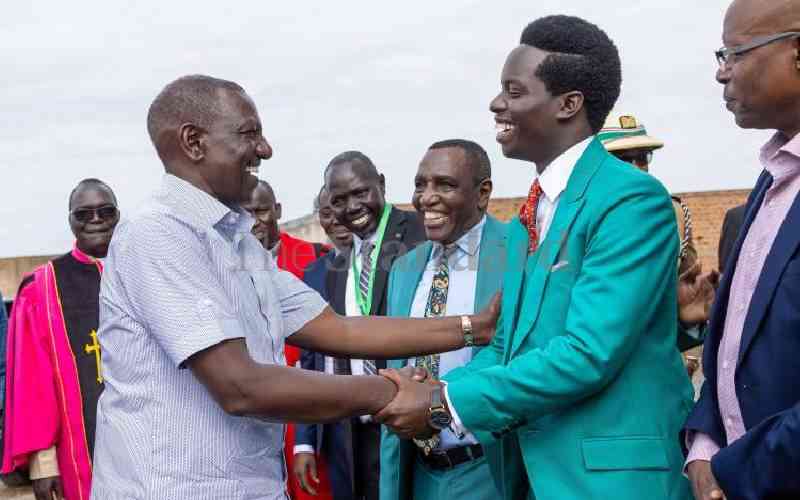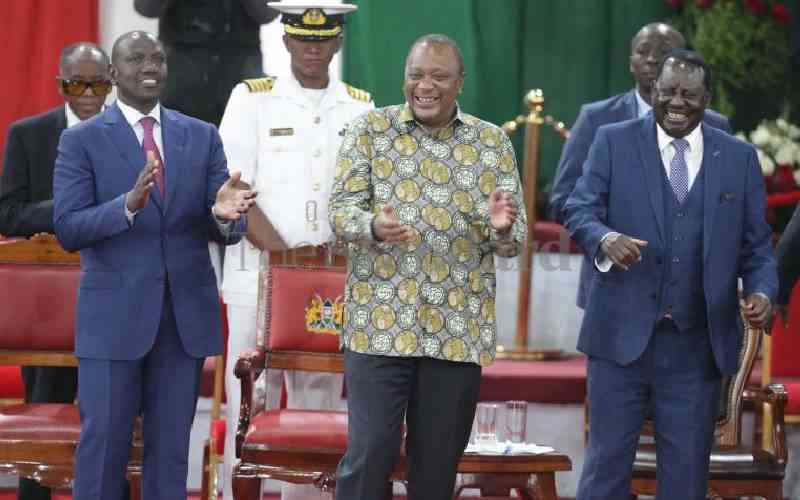A digital archive documenting former South African President Nelson Mandela’s life has been launched on the internet, writes Kiundu Waweru
Men and women all over the world right down the centuries come and go.
Some leave nothing behind not even their names…
Others do leave something behind: The haunting memory of the evil deeds they committed against other people, great violation of human rights not only limited to oppression and exploitation of ethnic minorities or vice versa, but who even resort to genocide to maintain their horrendous policies.
These are the words of the most celebrated man alive, Nelson Mandela, the first black and democratically elected president of South Africa.
The words are a gem and a rare glimpse. They are handwritten draft notes by Mandela for the first page of the first chapter of the sequel to his acclaimed autobiography, Long Walk to Freedom. Mandela penned the words on October 16, 1998.
F W de klerk’s confessions
You can also get a glimpse of the manuscript and more on the life and times of Mandela online, at archive.nelsonmandela.org courtesy of collaboration between the Nelson Mandela Centre of Memory (NMCM) and the Google Cultural Institute.
The Nelson Mandela Digital Archive Project was launched on Tuesday, last week, in South Africa, and it is now live on the web. Apart from the manuscript, the archives will transport you to Mandela’s early life, prison years, and the presidential years to his current status. It bears images, documents and photos.
Of note is My Moments With a Legend, an archive of photographs and video of people who came into contact with Mandela. The video starts with F W de Klerk, the last president of apartheid era South Africa commenting about a picture that shows a lean, smiling Mandela leaning on an equally jovial F W de Klerk. Klerk says the picture was taken on May 10, 2004, in the South African Parliament on the tenth anniversary of the day since the inauguration of Mandela as president.
Klerk adds that Mandela walked with difficulty and he leaned on him heavily. They walked together amid the applause of parliamentarians from all parties. He notes that this was a special moment for him as it was a symbol of how reconciliation can manifest itself.
Celebrity among ordinary
"He and I have become good friends after years of being opponents, after periods when there were stresses and strains between us and that day was symbolic of this new friendship which has developed," he notes.
The video also features ordinary people who keep pictures they took with Mandela as mementos. NMCM says that as an international icon, Mandela has been sought out by the rich and the famous and surrounded by celebrity.
"But the mantel of celebrity has never sat well on him and he has worked hard at making himself accessible to ordinary people," remarks NMCM.
Stay informed. Subscribe to our newsletter
This is evident in the My Moment With a Legend Video, where people from singers, community workers to students give emotional accounts. One teacher, Heidi, narrates of how Mandiba visited her school on May 9, 1996. She says many people lined the streets to catch a glimpse of him and she was surprised when Mandela came out to talk a group of anti ANC supporters.
When Mandela was leaving the school, Heidi’s mother called.
"I received a call from my mother asking I invite the President of South Africa to our house for tea. Well, being a good daughter, I did as I was told," she says.
The prison’s gardens
Mandela said that his secretary would call later and set the appointment. On May 18, Mandela honoured the tea invite. Heidi says that the streets and even roofs leading to her home were lined up with people. The unbelieving Heidi’s family was there to meet him and her granny; an age mate with Mandela was so taken with him that she became an ANC supporter.
The video closes with Arch Bishop Desmond Tutu emotionally recalling the momentous time when he introduced to the expectant world the new South African President. He remembers describing Mandela as "our brand new out of the box president."
And then there are pictures of Mandela with one dating as early as 1938. Browse and you will find a 1971 picture, the earliest one showing Mandela’s Robben Island cell; another in 1977, while working at the Prison’s garden.
The Google South Africa Country Manager, Luke Mckend said during the launch that the archive includes 1,900 unique images, documents and videos which will grow overtime.
"It is invigorating to see our combined efforts become a reality," said Verne Harris from the NMCM.
"This digital intiative will make it possible for us to reach the full spectrum of our stakeholders; visitors can search and browse the archives to explore the different parts of Mr Mandela’s life and work in depth."
The archive shows how extraordinarily simple an extraordinary statesman really is.
 The Standard Group Plc is a
multi-media organization with investments in media platforms spanning newspaper
print operations, television, radio broadcasting, digital and online services. The
Standard Group is recognized as a leading multi-media house in Kenya with a key
influence in matters of national and international interest.
The Standard Group Plc is a
multi-media organization with investments in media platforms spanning newspaper
print operations, television, radio broadcasting, digital and online services. The
Standard Group is recognized as a leading multi-media house in Kenya with a key
influence in matters of national and international interest.
 The Standard Group Plc is a
multi-media organization with investments in media platforms spanning newspaper
print operations, television, radio broadcasting, digital and online services. The
Standard Group is recognized as a leading multi-media house in Kenya with a key
influence in matters of national and international interest.
The Standard Group Plc is a
multi-media organization with investments in media platforms spanning newspaper
print operations, television, radio broadcasting, digital and online services. The
Standard Group is recognized as a leading multi-media house in Kenya with a key
influence in matters of national and international interest.








